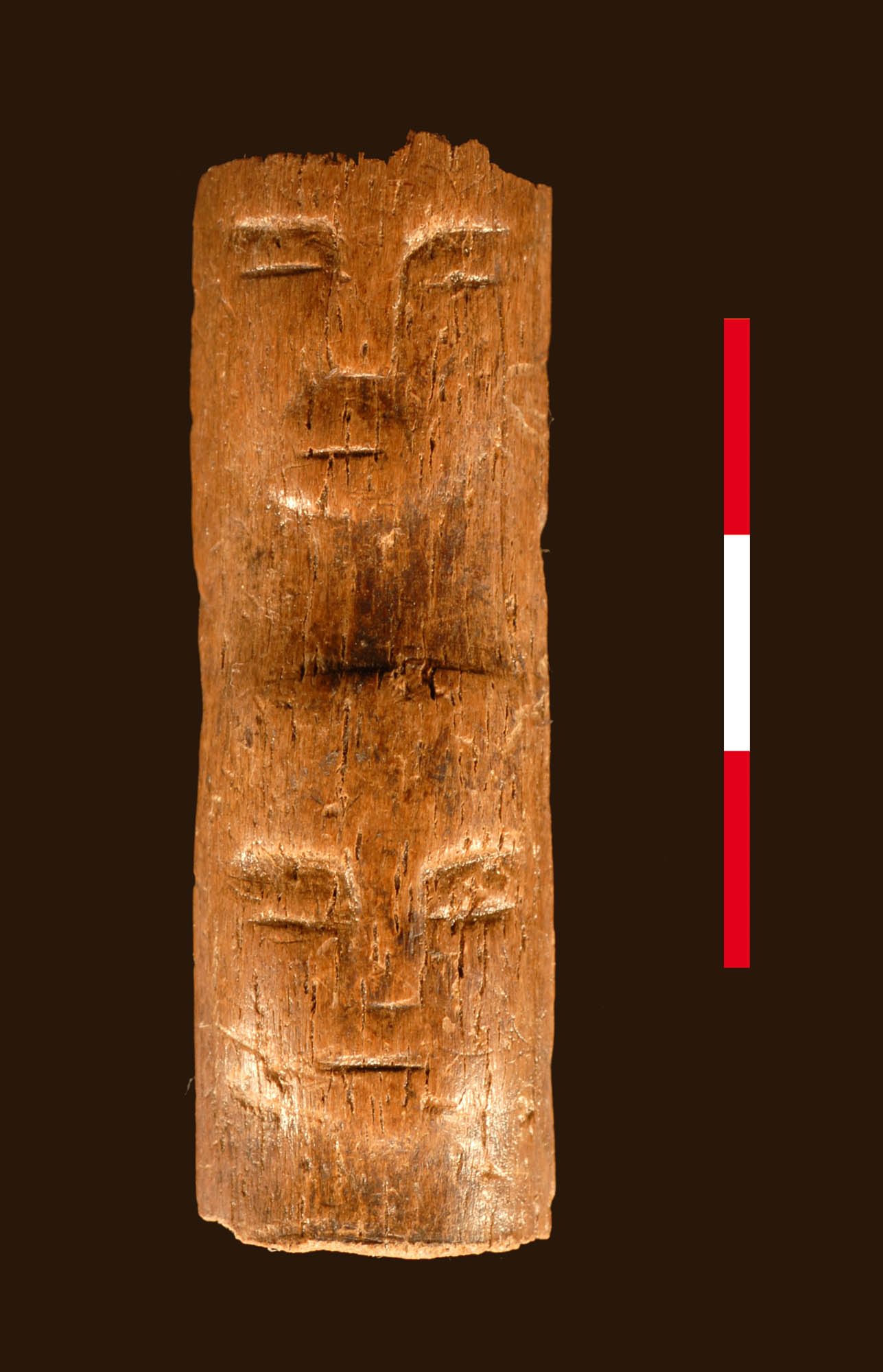
Archaeologists have unearthed an ancient staff carved with two realistic human faces in southern Syria.
The roughly 9,000-year-old artifact was discovered near a graveyard where about 30 people were buried without their heads — which were found in a nearby living space.
"The find is very unusual. It's unique," said study co-author Frank Braemer, an archaeologist at the Centre National de la Recherche Scientifique in France. [See Images of the Ancient Wand and Skeletons]
The wand, which was likely used in a long-lost funeral ritual, is one of the only naturalistic depictions of human faces from this time and place, Braemer said.
Ancient site
Researchers first uncovered the wand during excavations in 2007 and 2009 at a site in southern Syria called Tell Qarassa, where an artificial mound made from the debris of everyday human life gradually built up in layers over millennia. (Though many stunning archaeological sites have been looted or bombed since the onset of the Syrian Civil War, this site is in a fairly peaceful area and has so far escaped damage.) [Photos: 7 Stunning Archaeological Sites in Syria]
Other archaeological evidence from the site suggests the ancient inhabitants were amongst the world's first farmers, consuming emmer (a type of wheat), barley, chickpeas and lentils, and herding or hunting goats, gazelles, pigs and deer, the authors write in the March issue of the journal Antiquity.
Sign up for the Live Science daily newsletter now
Get the world’s most fascinating discoveries delivered straight to your inbox.
Mysterious wand
After the skeletons and wand were buried, someone seems to have dug up and removed the skulls, placing them in the inhabited portion of the settlement.
The bone wand was likely carved from the rib of an auroch, the wild ancestor of cows, and was about 4.7 inches (12 centimeters) long. Two natural-looking faces, with eyes closed, were carved into the bone, though the wand was intentionally broken at both ends, with more faces likely originally adorning the staff.
The relic's purpose and symbolism remain a mystery.
"It's clearly linked to funerary rituals, but what kind of rituals, it's impossible to tell," Braemer told Live Science.
The find marks a transition in culture toward more interest in the human form. Older artifacts typically showed stylized or schematic representations of humans, but realistic depictions of animals. Art unearthed in what is now Jordan and Anatolia from the same time period also employs delicate, natural representations of the human form, suggesting this trend emerged simultaneously in regions throughout the Middle East, Braemer said.
The artistic innovation may have been tied to the emerging desire to create material representations of identity and personhood, the authors write in the paper.
Exactly why someone dug up the skulls and placed them within the living areas of the settlement is also unclear. But archaeologists unearthed similar finds in Jericho, Israel, dating to around 9,000 years ago, where the skulls of ancestors were covered with plaster and painted with facial features, then displayed in living spaces.
One possibility is that the practice was a form of ancestor worship, in which the human faces represented the living presence of supernatural beings in a humanized form.
It's also possible the heads on display were trophies from vanquished enemies, Braemer told Live Science.
Follow Tia Ghose on Twitterand Google+. Follow Live Science @livescience, Facebook & Google+. Original article on Live Science.

Tia is the managing editor and was previously a senior writer for Live Science. Her work has appeared in Scientific American, Wired.com and other outlets. She holds a master's degree in bioengineering from the University of Washington, a graduate certificate in science writing from UC Santa Cruz and a bachelor's degree in mechanical engineering from the University of Texas at Austin. Tia was part of a team at the Milwaukee Journal Sentinel that published the Empty Cradles series on preterm births, which won multiple awards, including the 2012 Casey Medal for Meritorious Journalism.









